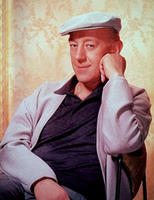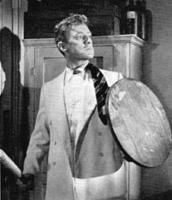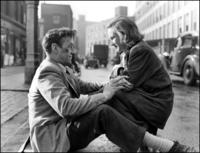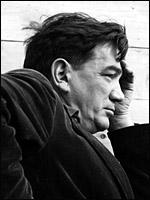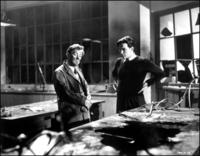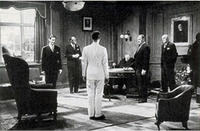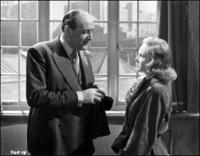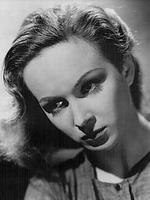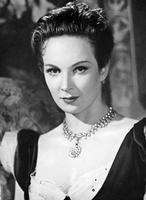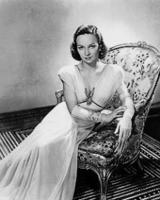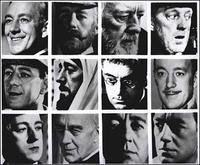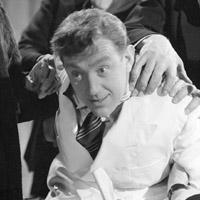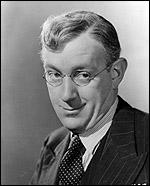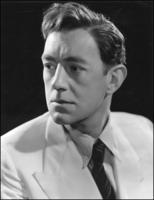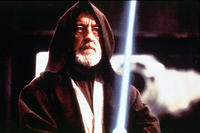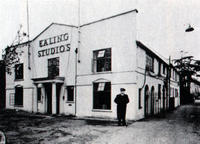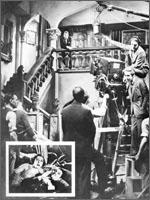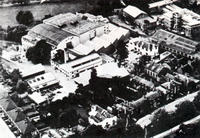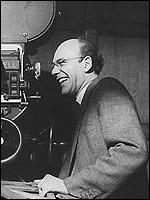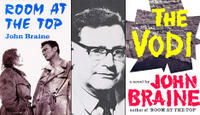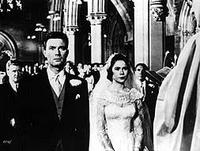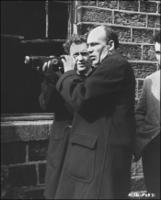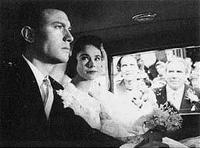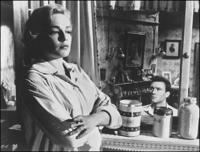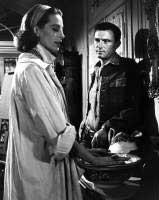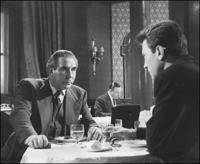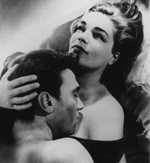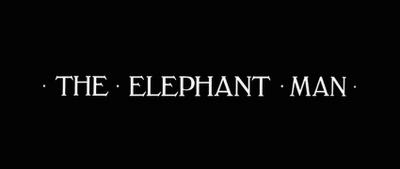
Pamela's Nite
Joe's Special (Grass-fed Beef Scramble), Roasted Potatoes, Birthday Cake
Stuart: Well, that was the best movie we've seen, is it not?
Joseph Carey Merrick (August 5, 1862 - April 11, 1890), known as "The Elephant Man", gained the sympathy of Victorian Britain because of his extreme deformity.
Early biographies of Merrick inaccurately give his first name as "John", an error repeated in many later versions, including the 1980 film The Elephant Man.Born in Leicester to mother Mary Jane Merrick, he had a younger brother and sister. He began showing signs of deformity at age two. His mother died when he was 11. According to family accounts, she too was "crippled". He then was forced to live with his father and stepmother, who did not want him and forced him to earn his keep by selling goods on the street. For the better part of his life he was unemployable, so as a last resort he took a job as a sideshow attraction. He was treated decently, and made a small amount of money. When sideshows were outlawed in the UK in 1886 he traveled to Belgium to find work and was mistreated by a showman.
Merrick was befriended by Dr. Frederick Treves, a physician at London Hospital and was given a permanent home there. He was something of a celebrity in High Victorian society, eventually becoming a favorite of Queen Victoria. He found some solace in writing, composing both prose and poetry in his later years. He was cared for at the hospital until his death from suffocation while sleeping, which was apparently accidental. Merrick was unable to sleep horizontally due to the weight of his head, but may have intentionally tried to do so in this instance in an attempt to imitate normal behavior.
His life story became the basis of a 1979 Tony Award-winning play, and in the following year an Academy Award-nominated film, which were unrelated but both called The Elephant Man.
Joseph Merrick is also rumoured to have helped to design the East Stand, also referred to as the matchstick stand at Filbert Street.
The Elephant Man's Mistaken Identity: The Elephant Man was not the Elephant Man.
To be more precise, John Merrick did not suffer from the genetic disorder which has come to be known as "Elephant Man disease." Recent studies of Merrick's remains have confirmed theories that Merrick was the victim of a much rarer disease that was unidentified until a century after his death, in a discovery that would be comparable to learning that Lou Gehrig did not have amyotrophic lateral sclerosis.One early belief was that Merrick suffered from elephantiasis, a disorder of the lymphatic system that causes parts of the body to swell to grotesque proportions. Later it was theorized that he had an extremely severe case of neurofibromatosis. This nervous system disorder causes nerve cells to grow out of control, creating large, misshapen tumors. Neurofibromatosis is not phenomenally rare, occurring in one of every 4,000 births, although no known case of neurofibromatosis has ever been as profound as Merrick's condition.
In 1979, a much more rare disease was identified as causing overgrowth of bone and other tissue. This disorder, named Proteus Syndrome, has been recorded in fewer than 100 cases, ever. Several years ago a U.S. National Institutes of Health panel suggested that Proteus Syndrome may have been the true cause of John Merrick's plight. A study of Merrick's remains at the Royal London Hospital appears to back up this diagnosis.
Radiologist Amita Sharma found that Merrick's spine was not as sharply curved as is normally found in cases of neurofibromatosis. In addition, Merrick's ribs do not demonstrate the peculiar notches and thinness associated with neurofibromatosis, and are actually abnormally thick. The extreme overgrowth of bone in Merrick's skull and the right side of his body is consistent with Proteus Syndrome.
Sharma based her conclusions on a series of x-rays and CAT scans produced at the Royal London Hospital, where Merrick's remains have been kept since his death. Contrary to popular belief, the Elephant Man's skeleton has never been in the possession of Michael Jackson or any other freak-obsessed private collector.
New York Times Review: The time is the late 1880's and the place is London, where the beau monde, the rich and fashionable as well as the mannered and the educated who aspire to higher things, live in a refinement that's all the more precarious for the assaults of the Industrial Revolution, which is wrecking the social order. Just beyond the elegant parks, malls, and town houses is the real London of crowded, narrow streets, slums, factories and sweatshops, and the ever-present smoke, grime, noise, and degradation.
In such a setting it's no surprise that a kind of sad, desperate genteelness was once equated with human dignity. To be kind and polite, in such a landscape, under such circumstances, when the masses were living in such squalor, were reassuring signs of orthodoxy to a threatened London Establishment.
The Elephant Man uses some of the devices of the horror film, including ominous music, sudden cuts that shock, and hints of dark things to come, but it's a very benign horror film, one in which "the creature" is the pursued instead of the pursuer.
Unlike the play, in which the actor playing John Merrick wears no makeup, his unadorned face representing the beauty of the interior man, the audience thus being forced to imagine his hideous appearance, the movie works the other way around. John Hurt, as John Merrick, is a monster with a bulbous forehead, a Quasimodo-like mouth, one almost-obscured eye, a useless arm, and crooked torso. It's to the credit of Christopher Tucker's makeup and to Mr. Hurt's extraordinary performance deep inside it, that John Merrick doesn't look absurd, like something out of a low-budget science-fiction film.
But what we eventually see underneath this shell is not "the study in dignity" that Ashley Montagu wrote about, but something far more poignant, a study in genteelness that somehow suppressed all rage.
That is the quality that illuminates this film and makes it far more fascinating than it would be were it merely a portrait of a dignified freak. Throughout the film one longs for an explosion. That it never comes is more terrifying, I think, than John Merrick's acceptance of the values of others is inspiring.
The key sequence in the movie is when Dr. Treves, played with humane, quirky compassion by Anthony Hopkins, brings Merrick home to tea with Mrs. Treves in a perfectly ordered Victorian drawing room.
Merrick, looking like the fastidiously dressed Walrus in the Tenniel illustrations for "The Walrus and the Carpenter," is a most dainty guest. He speaks in the acquired accents of an English upper-class gentleman's gentleman, and has the same sort of manners. "They have such noble faces," he says of the Treves family photographs on the mantelpiece, and then shows his hosts a picture of his mother, a very pretty woman. "Yes," he acknowledges, "she had the face of an angel," adding so delicately that one can only suspect what depths of feeling are being ignored, "I must have been a great disappointment to her. I tried so hard to be good."
Alan Splet (1939–1995) was an oscar winning sound designer and sound editor. He worked on numerous film projects throughout his career, including Eraserhead, Dune, and Blue Velvet. He had a fruitful and lasting working relationship with the director David Lynch whom he worked with on many films.
Gary Rydstrom Interview: I don't think an audience is going to care which parts of the soundtrack are coming from an orchestra and which parts are sound effects. Alan Splet was the best at using sound effects in an overtly psychological and musical way. His ambiences were stunning: applying rhythms and pitches of sounds as evocatively as a composer would.
Splet, Carson & the Oscars: Five-time host and beloved ad-libber Johnny Carson was known for off-the-cuff wisecracks such as his 1980 riff on no-show Oscar-winning sound editor Alan Splet ("First George C. Scott doesn't show, then Marlon Brando, and now Alan Splet"). What does a host need most? Uncanny quickness so he can react comically when the unexpected happens.
Freddie Francis Bio:
A clapper boy in British films while a teenager, Freddie Francis became a camera assistant and in the mid-1950s was an operator for Oswald Morris,the director of photography on John Huston's Moulin Rouge (1953) and Beat the Devil (1954); he also directed second-unit footage for Huston's Moby Dick (1956). As a director of photography himself, Francis worked for directors Karel Reisz (Saturday Night and Sunday Morning [1961], Night Must Fall [1964]), Jack Cardiff (Sons and Lovers [1960]), and fellow Huston-alumnus Jack Clayton (Room at the Top [1959], The Innocents [1961]). In the early 1960s he began directing but still occasionally shot films for such directors as Reisz and David Lynch. As a director, Francis has specialized in horror films, notably at Hammer, but also for producers Max J. Rosenberg and Milton Subotsky and the anthology films Dr. Terror's House of Horrors [1965], Torture Garden [1967], and Tales from the Crypt [1972]).
Freddie Francis on B&W: Although Francis recently won his second Academy Award (for GLORY), he earned his reputation with black & white cinematography, on ROOM AT THE TOP, SONS AND LOVERS and, later, THE ELEPHANT MAN. Scorsese wanted to replicate the stark contrast and murkiness of black & white photography, which Francis finds easy to do: "I don't really know anything about color. I still photograph things in black & white, but the fact that it's color stock means they come out in color. I know that sounds rather facetious — I am rather facetious anyway — but I prefer to think in terms of light and shade than in color."
Glenn Erickson: Freddie Francis, the great cameraman of Sons and Lovers and The Innocents and himself a director of middling horror films, gives Lynch's vision a celluloid interpretation with many layers of visual complexity. Dusky office interiors are just right, and you can almost feel the late 1800s in the struggling-to-be-antiseptic surgical theater. The cramped streets and cozy salons have an evocative richness that never becomes saccharine, as in Oliver!, yet is far more expressive than its nearest English horror competition, the very good The Flesh and the Fiends. Francis brings out the best in directors both fussy (Jack Clayton) and exacting (Jack Cardiff). Here in Elephant, David Lynch is able to create several very different worlds - the dark and nightmarish French circus (very much like scenes in Night of the Hunter), the stuffy hospital, and John Merrick's phantasmagorical inner world.
Screenonline: In interviews, he has expressed his unhappiness at being typed as a horror film director and insisted that he has no particular affinity for the genre. His willingness to challenge generic conventions, as in his combination of horror and humour in the strange and perverse black comedy Mumsy, Nanny, Sonny and Girly (1969), suggest that the originality and adventurousness of his cinematography might, in a different context, have found greater expression in his directorial assignments.
Ashley Montagu (1905-1999), born Israel Ehrenberg in East London in 1905, was one of those rare men of learning who succeeded in making substantive scholarly contributions to their academic disciplines while at the same time maintaining contact with the educated layman, indeed contributing substantively to the latter's learning. In addition, he was a dedicated and articulate social critic, concerned with bringing the findings of the social and biological sciences to bear upon the betterment of man's lot, while subjecting some of those very findings to critical social scrutiny. His accomplishments in these three domains, the scientific, the public-educational, and the socioethical, will be treated as a unity in what follows, in accordance with what was clearly the spirit of the program that guided his life's work.
Montagu's papers on race in the late 1930s, culminating in his book "Man's Most Dangerous Myth; The Fallacy of Race" (1942a) and followed by a series of works (including Montagu 1951; 1964; 1975), had the effect of upsetting the traditional concept of race accepted by most anthropologists in that it challenged the reality of anything corresponding to that notion. Montagu emphasized that gene-frequency analysis of traits would tell us more about the evolution of human populations, arguing that the omelet conception of racial mixing was totally artificial and did nothing to explain the origins and consequences of the differences between populations.
Wikipedia: Later in life, Montagu actively opposed genital modification and mutilation of children. In 1994, James Prescott, Ph.D., wrote and named in honor of Dr. Montagu, who was one of its original signers, the Ashley Montagu Resolution to End the Genital Mutilation of Children Worldwide: A Petition to the World Court, The Hague. Supporters worldwide sign it now at http://MontaguNoCircPetition.org.
Montagu taught and lectured at Harvard, Princeton (where he chaired the Department of Anthropology), University of California, and New York University. He wrote over 60 books. He collaborated with Sir Frederick Treves to research and write The Elephant Man: A Study in Human Dignity.
The Evil That Men Do: After a happy childhood despite a lot of moving around, Lynch at age 19 enrolled at the Pennsylvania Academy of Fine Art in Philadelphia, to study art. One of his projects was to combine visual arts with cinema to make Six Figures Getting Sick (1966), a looped animation projected onto one of his sculptures. On the strength of this 'moving painting' Lynch was able to secure funding to make his first two short films The Alphabet (1968) and The Grandmother (1970). The critical success of these films, followed by a move to Los Angeles with his new wife and child, inspired Lynch to spend the next six years making his first feature, the sublime Eraserhead (1976). Partly inspired by his disgust of industrial and violent Philadelphia, and expressing many of his anxieties over having just become a father, Eraserhead remains Lynch's most personal film.
Eraserhead is a nightmare vision of a world where men control all aspects of reproduction, turning sex into a mechanised process. The result is a world of industrial decay where life is more morbid than death itself. The infamous baby in Eraserhead is not naturally conceived but created by The Man on the Planet (Jack Fisk), a deformed monster who unnaturally creates life by pulling levers. Without love, life is an artificially created abomination.
One of Eraserhead's biggest fans was comic writer/director Mel Brooks who famously once described Lynch as "Jimmy Stewart from Mars". Brooks introduced Lynch to Hollywood by having him direct The Elephant Man (1980), the beautifully sad true story of grotesquely deformed John Merrick (John Hurt). The Elephant Man was the first film to combine Lynch's unique industrial and organic visuals with a truly moving story about inner beauty and familial love. It was nominated for several Academy Awards including Best Picture and Best Director.
Guardian Interview: "Film can't just be a long line of bliss. There's something we all like about the human struggle," he says, but just as he appears about to delve into his darker muses, he adds cheerily: "Meantime I know that the Maharishi's peace plan will work and I want to do what I can to help it."
Director Profile: The Elephant Man, though shot in black and white and possessing many of Lynch's unique touches, was accessible to a mainstream audience. Its immense critical and commercial success awoke the industry's interest in Lynch's talent. This interest led to Lynch directing the hugely expensive science-fiction epic Dune (1984), which proved to be a box office failure.
A POEM OFTEN QUOTED BY MERRICK:
Tis true my form is something odd.
But blaming me is blaming God;
Could I create myself anew,
I would not fail in pleasing you.
If I could reach from pole to pole,
Or grasp the ocean with a span,
I would be measured by the soul,
The mind's the standard of the man.
(This poem was used by John Merrick in a pamphlet accompanying his freak show, and later when he wrote to thank people for their generosity in caring for him)
